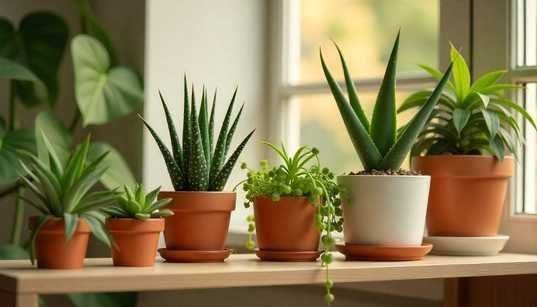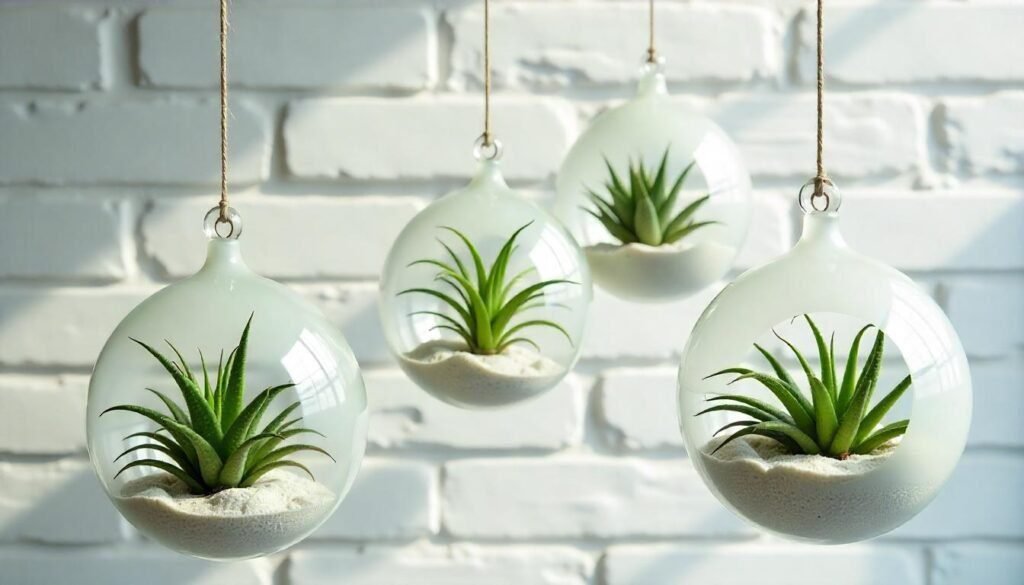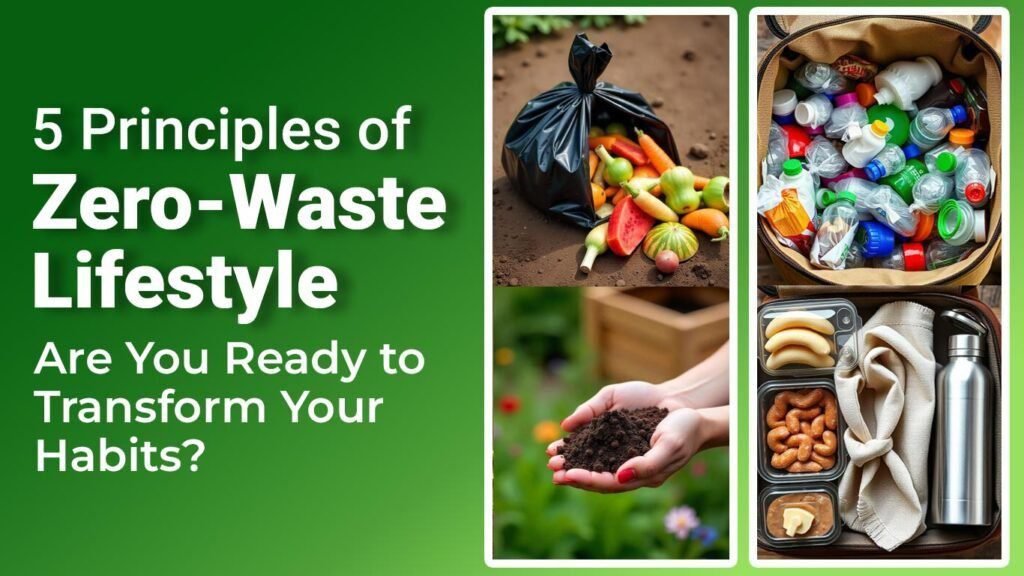Introduction
Urban gardening has emerged as a significant practice for families residing in cities, where green spaces are limited and the daily pace of life can be hectic. It presents a wonderful opportunity for families to cultivate their patches of nature, enabling them to reconnect with the environment and enjoy the myriad benefits of gardening. This guide will delve into the essentials of starting an urban family garden, specifically focusing on sustainable houseplants suitable for urban homes.

By engaging in urban gardening, families can reap the rewards of fresh produce right at their doorsteps. Growing your fruits, vegetables, and herbs not only enhances culinary experiences but also promotes health and well-being. This is particularly beneficial for families seeking to instill the merits of nutrition in their children while also providing organic options free from pesticides. Additionally, indoor plants for families serve as an excellent education tool, teaching children about plant growth cycles, responsibility, and sustainability.
Moreover, incorporating indoor plants into your home can significantly improve indoor air quality. Air-purifying plants for homes reduce harmful toxins, creating a healthier environment for children and pets alike. Selecting the best indoor plants for green parenting involves choosing low-maintenance and kid-friendly houseplants that create a safe and nurturing atmosphere. Utilizing beginner-friendly indoor plants can ease the transition into gardening and foster a love for nature among urban dwellers.
This guide aims to give comprehensive indoor gardening tips for parents, covering the selection of suitable plants, optimal gardening techniques, and sustainable practices that urban families can adopt. From hard-to-kill houseplants for beginners to tips on creating an indoor space for plant growth, you will find valuable insights to cultivate a thriving urban family garden. Join us as we explore the steps to embark on this rewarding journey while nurturing the planet and educating the next generation.
Choosing the Right Space for Your Urban Garden
When embarking on the journey of creating an urban family garden, selecting the appropriate space plays a critical role in the overall success of the venture. Families must consider various types of settings, including available backyards, balconies, rooftops, or even community gardens. Each location presents unique benefits and challenges that require careful evaluation.
Also Read Trending Post
- 20 High Protein Meal Prep Ideas for Weight Loss, Muscle Gain & Busy Lifestyles (2025 Guide)
- Healthy and Sustainable Rooftop Gardening Guide for Beginners: Simple and Effective Methods
- Eco-Friendly Meal Prep Ideas: 10 Essential Tips for Healthy and Sustainable Eating
- Microplastics: Invisible Danger in Our Food, Water, and Environment
- Top 25 Plant-Based Protein Sources Chart: Your Ultimate Visual Guide for a Healthier Diet!
Sunlight exposure is one of the most crucial factors when choosing a space for your indoor plants for families. Plants typically thrive in bright, indirect sunlight, and locations must be assessed for optimal light conditions. If your family garden is situated in an area that receives minimal sunlight, opt for low-maintenance indoor plants or indoor plants that don’t need sunlight to flourish, ensuring that your chosen plants still grow healthily, even in shaded environments.
Accessibility is another important consideration. The garden should be easily reachable for all family members, particularly children. An accessible garden space encourages children to actively participate in the gardening process, fostering a sense of responsibility and an understanding of eco-friendly indoor plants for families. This interaction is essential for establishing a foundation for green parenting.
Additionally, the size and layout of the space heavily influence the choice of plants. If space is limited, focus on selecting low-maintenance houseplants, pet-friendly indoor plants, or even indoor plants for small spaces, allowing for diverse greenery without cluttering the area. On the other hand, larger areas provide opportunities for more extensive gardening practices, including the cultivation of air-purifying indoor plants and other fast-growing indoor plants.
In urban environments, challenges such as soil quality and air pollution may arise. Utilization of eco-friendly indoor plants and sustainable houseplants for urban homes can help mitigate these issues. Thoroughly analyzing the environment will ensure families choose the most suitable site for their urban gardening pursuits, leading to a rewarding and engaging experience for everyone involved.
Selecting Plants Suitable for Urban Gardening
Creating an urban family garden can be an enjoyable experience for both parents and children. When selecting plants that thrive in smaller spaces, it is essential to consider the specific needs and conditions of your garden area, while also keeping child-friendliness in mind. One of the most suitable choices for urban family gardens includes herbs, vegetables, and flowers that can adapt easily to limited space and low-light conditions.
For families looking for low-maintenance indoor plants, herbs such as basil, mint, and oregano offer freshness while being easy to care for. They can be grown in window boxes or pots, making them ideal for urban settings. Vegetables like radishes and lettuce are also excellent options; both are fast-growing indoor plants that can be harvested relatively quickly, providing an immediate sense of accomplishment for young gardeners.
Additionally, kid-friendly houseplants, such as succulents and spider plants, are not only decorative but also require minimal care. Their resilience makes them hard-to-kill houseplants, ensuring they remain thriving despite occasional neglect from little hands. Beyond being aesthetically pleasing, many of these plants, such as peace lilies and snake plants, serve as air-purifying plants for homes, enhancing the indoor environment.
To further facilitate the selection process, create a simple table outlining various plant varieties, categorized by their growing conditions, maintenance needs, and compatibility with children. This resource will guide families in making informed decisions tailored to their urban gardening aspirations.
Incorporating seasonal planting tips into your family’s gardening routine can also promote participation from children. Encourage them to choose plants that match the current season and engage them in discussions about what plants grow best and when. This collaborative approach not only fosters learning but also enhances their appreciation for nature.

Essential Gardening Tools and Supplies
Starting an urban family garden involves more than simply choosing the right plants; it requires a thoughtful selection of essential gardening tools and supplies that will facilitate a successful and enjoyable gardening experience. For families looking to embark on this green parenting journey, it is vital to invest in both basic and specialized tools that cater to their unique needs and constraints.
Basic gardening tools include shovels, trowels, and hand cultivators, which are fundamental for digging, planting, and loosening soil. These tools should be lightweight and ergonomic to accommodate parents who may have limited gardening experience. Furthermore, families may benefit from incorporating garden gloves to protect their hands during planting and maintenance tasks. Additionally, a quality watering can or hose with an adjustable nozzle will allow for tailored watering, ensuring that indoor plants receive the appropriate amount of moisture. Choosing low-maintenance indoor plants can further simplify the process as they typically require less attention and are often forgiving of the occasional oversight.
For those interested in container gardening, specialized items such as potting soil, drainage tray, and plant containers are essential. Opting for eco-friendly supplies made from sustainable materials not only supports greener practices but also ensures durability. When considering costs, it is advisable to invest in a few high-quality items rather than opting for cheaper, less efficient products that may need frequent replacement.
To keep expenses manageable, families can also explore second-hand tools or community gardening exchanges, which can provide access to necessary supplies at a lower cost. Having a checklist of tools and supplies will help parents avoid impulse buying, ensuring that they select only what is essential for their urban family indoor gardening project, setting the stage for an enriching green experience.
Creating a Gardening Plan: Layout and Design
When embarking on the journey of establishing an urban family garden, a well-thought-out design is paramount to facilitate healthy plant growth and enhance aesthetic appeal. A solid gardening plan will not only provide clarity on plant placement but also foster an engaging and interactive environment for children. In this section, we will explore effective strategies for creating a successful garden layout.
First, consider the space available and the types of indoor plants for families that are suitable for your specific environment. This includes selecting from options like low-maintenance indoor plants, air-purifying plants for homes, and even pet-friendly indoor plants. For urban families living in small spaces, choosing indoor plants that don’t require direct sunlight or can thrive in low-light conditions is essential. It is advisable to categorize plants based on their light and water requirements to maximize growth potential.
Effective plant spacing plays a critical role in ensuring that each plant has sufficient airflow and access to resources without competing for space. When planning your layout, utilize vertical gardening techniques, such as wall-mounted planters or hanging pots, particularly beneficial for small areas. These methods not only enhance accessibility for children but also create an eye-catching display that encourages involvement in gardening activities.
Moreover, involving children in the design process can add a personal touch to the garden while cultivating creativity. Encourage them to express their preferences for colors, shapes, and types of plants. Opting for beginner-friendly indoor plants or fast-growing indoor plants can lead to immediate gratification as children witness the fruits of their labor. This collaborative approach transforms the gardening experience into a fun and educational journey, laying a foundation for sustainable houseplants for urban homes.
In conclusion, planning a garden layout that caters to the needs of the family, both aesthetically and practically, involves thoughtful consideration of plant selection, spacing, and vertical techniques. By integrating children into the design process, parents can cultivate not only a thriving urban garden but also a lifelong appreciation for nature.
Daily Care and Maintenance of Your Urban Garden
Caring for an urban garden entails a series of daily maintenance tasks that ensure the health and productivity of your plants. For busy families, developing a manageable care regimen is essential. First and foremost, understanding the watering needs of your indoor plants for families is critical. Most indoor plants thrive with a watering schedule that can be adjusted seasonally. During warmer months, more frequent watering is necessary, whereas many plants prefer drier conditions in the cooler months. It is advisable to check the soil moisture before watering; a simple finger test can gauge when it’s time to hydrate your green friends.
Fertilization is another key aspect of maintaining a thriving garden. For the best indoor plants for green parenting, choose organic fertilizers that are safe for children and pets. A bi-weekly feeding schedule often supports healthy growth, but hard-to-kill houseplants may require less frequent applications. As children become involved in these tasks, they not only learn about plant care but also develop a sense of responsibility and teamwork within the family.
Pest management is crucial for the longevity of your plants. Regularly inspect your indoor plants for any signs of pests or disease. Keeping a healthy environment through proper air circulation and avoiding overwatering can prevent many common pest issues. If pests appear, children can assist in identifying them, making the experience educational. Consider using eco-friendly pest control options that align with sustainable houseplants for urban homes.
Incorporating your children into daily garden tasks promotes engagement and nurtures an appreciation for nature. By sharing the responsibilities of watering, fertilizing, and pest management, families can foster a collaborative environment. The inclusive approach not only supports the growth of healthy plants, such as air-purifying indoor plants or beginner-friendly indoor plants, but also cultivates a lasting bond within the family, enriching their urban gardening experience.

Involving Your Children in the Gardening Process
Involving children in the gardening process can be a rewarding experience that not only cultivates a love for nature but also instills valuable life skills. Engaging young ones in the management of an urban family garden allows them to explore the wonders of plant life while learning about sustainability and the importance of eco-friendly practices. One of the best indoor plants for families is a great option to start your gardening journey indoors, especially if outdoor space is limited.
Begin with simple gardening activities that are appropriate for their age. Tasks such as planting seeds, watering plants, and harvesting can be enjoyable and educational. For example, consider introducing them to fast-growing indoor plants or easy-to-maintain houseplants, such as spider plants or pothos, which are known for being low-maintenance indoor plants. These plants not only require minimal effort but also enhance the aesthetic of your living space.
Another engaging activity is creating a small herb garden. Herbs like basil and mint are beginner-friendly indoor plants that can be grown in pots. Children will enjoy watching them grow and can even help incorporate these herbs into your meals, promoting an understanding of nutrition and healthy eating habits. Additionally, projects such as creating DIY plant markers from recycled materials can foster creativity while reinforcing their connection to plants.
Consider introducing garden-related projects that emphasize the benefits of indoor gardening. For instance, air-purifying plants for homes, such as peace lilies or snake plants, not only improve indoor air quality but also teach kids about the importance of clean air. Exploring kid-friendly houseplants that are pet-safe can also make them more curious about responsible plant care.
Lastly, establishing a family garden routine can strengthen family bonds and create lasting memories. Weekly gardening sessions can serve as a platform for discussions regarding environmental responsibility and sustainability. The joy of nurturing plants together can foster a sense of teamwork and responsibility, laying the groundwork for future eco-conscious behaviors.
Troubleshooting Common Gardening Challenges
Urban gardening presents unique challenges, particularly for families navigating limited space and varying environmental conditions. One of the foremost issues faced by urban gardeners is the restricted area available for planting. To maximize space, families can consider utilizing vertical gardening techniques. Installing wall-mounted planters or using tiered shelving allows for the cultivation of indoor plants for small spaces. Additionally, opting for low-maintenance indoor plants can reduce the workload while still offering a vibrant environment.
Pests are another common hurdle in urban gardening. The proximity of buildings and other urban structures can encourage the presence of unwanted insects. Emphasizing preventative measures is essential; families should regularly inspect their plants for early signs of infestations. Utilizing organic pest control methods, such as neem oil or insecticidal soap, can be both effective and safe for households with children and pets. Incorporating kid-friendly houseplants can also mitigate risk, as many family-friendly plants are resilient against pests.
Disease management is crucial for sustaining a healthy urban family garden. Regular monitoring of plant leaves for discoloration or wilting can help catch issues before they escalate into significant problems. Tracking the garden’s health with a simple journal can prove invaluable. Noting watering schedules, sunlight exposure, and any pest sightings allows families to identify patterns and adjust care accordingly. Resources such as local plant clinics or gardening apps can provide guidance in diagnosing plant ailments, empowering urban gardeners with the knowledge needed to cultivate resilient and thriving plants.
Incorporating air-purifying plants for homes not only enhances the aesthetic appeal of urban family gardens but also contributes to better indoor air quality. Implementing the suggested strategies alongside proactive care will help families manage common gardening challenges effectively, ensuring a flourishing green space even in confined urban settings.
Conclusion: Embracing the Urban Gardening Lifestyle
As we have explored throughout this guide, urban gardening presents an exhilarating and rewarding opportunity for families to engage with nature while fostering a sustainable lifestyle. By integrating indoor plants for families into daily life, parents can successfully promote environmental consciousness and healthy eating habits among their children. Choosing the best indoor plants for green parenting allows families to create a vibrant environment that nurtures both physical and emotional well-being.
Urban family indoor gardening can take many forms, from cultivating low-maintenance indoor plants to selecting kid-friendly houseplants that encourage hands-on learning and responsibility. These educational experiences instill a sense of stewardship in children, teaching them the importance of caring for living things. Furthermore, air-purifying plants for homes contribute to better indoor air quality, which is increasingly vital in urban settings where pollution levels may be high.
For those new to gardening, beginner-friendly indoor plants and low-maintenance houseplants serve as perfect entry points. These choices help build confidence while fostering a love for nature. Also, incorporating sustainable houseplants for urban homes aligns with eco-friendly values that benefit both families and the planet. The inclusion of pet-friendly indoor plants ensures that even four-legged family members can safely enjoy a green environment.
To conclude, every family can participate in this enjoyable, educational adventure by incorporating indoor gardening tips for parents and selecting the most suitable plants for their unique living conditions. Urban gardening not only enriches the home environment but also promotes a lifestyle centered around respect for nature and sustainability. As parents take these steps, they contribute to nurturing a greener future for the next generation, one plant at a time.
FAQs About Starting an Urban Family Garden
Starting an urban family garden raises many questions as parents seek to create a nurturing space for their children and cultivate a love for nature. Below are some frequently asked questions regarding urban family gardening.
What are the best indoor plants for small spaces?
When dealing with limited space, choosing the right indoor plants is crucial to maximize your gardening efforts. Some of the best indoor plants for small spaces include low-maintenance indoor plants like pothos, snake plants, and spider plants. These options not only fit well in smaller environments but are also suitable for families, as they are considered kid-friendly houseplants. Additionally, air-purifying plants for homes, like peace lilies and rubber plants, provide the added benefit of improving indoor air quality while occupying minimal space.
How often should I water my garden?
Watering frequency depends on various factors such as plant type, climate, and soil conditions. In general, indoor plants that don’t require much sunlight typically need watering every 7 to 14 days, allowing the soil to dry slightly between waterings. It’s important to monitor your plants closely, as overwatering can lead to root rot. For beginner-friendly indoor plants that thrive with minimal watering, consider options like succulents or ZZ plants. Establishing a regular watering schedule helps maintain healthy plants in your urban family garden.
Can my children help with gardening tasks?
Involving children in gardening tasks is a fantastic way to teach them about nature and responsibility. Many age-appropriate activities can be done together, such as planting seeds or watering the garden. Providing them with simple tasks, like checking soil moisture or creating plant markers, fosters a sense of achievement and responsibility. A family gardening experience can significantly enhance your children’s learning while nurturing their connection with eco-friendly indoor plants for families. Overall, engaging in gardening as a team cultivates valuable life skills and strengthens family bonds.












Wow! Thank you! I permanently wanted to write on my blog something like that. Can I take a portion of your post to my website?
Your comment is awaiting moderation.